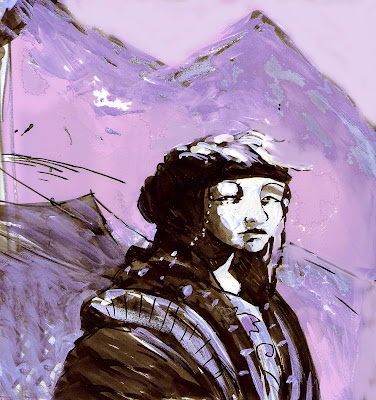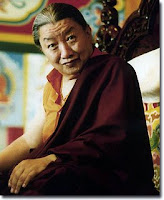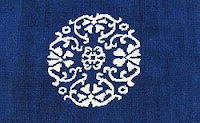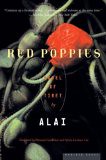In the wonderful book,
The Mountains of Tibet by Mordicai Gerstein, the young boy living in the mountains of Tibet lived a wonderful life of flying kites, hard work, a loving family, and peace.
When he died, which is the natural progression of life, he rose into the sky where he was given the choice to move on to Heaven or choose to live another life as anything he wanted to be and anywhere in the world. Because that was his one regret in life–not seeing more of the big wide world.
A Tibetan woodcutter dreams of exploring the world, but is too busy with his life to ever leave his valley. After he dies, he is taken on a journey through the cosmos and all the places on Earth as he makes choices that lead him to a new life.-Amazon
The man’s journey to pick a new life starts on the largest plane–picking a galaxy. His path to a new life follows the Tibetan Book of the Dead. Start at the biggest part of life and go down to the minutest detail. And these are all hard decisions. Which galaxy? Which star? Which planet? Which country? There are so many choices! So will the Tibetan man choose to go back to his familiar home in the mountains of Tibet, or will he choose to experience new things in exciting countries far away?
Mordicai Gerstein’s book
The Mountains of Tibet shows a unique way of explaining death and life to young children. It’s a beautiful, natural process filled with free will decisions. The illustrations are simple yet beautiful, helping children’s imaginations to flare to life.
{CLICK TO TWEET} If you could travel anywhere-where would you go? The Mountains of Tibet review & activities @Jumpintoabook1
Something To Do
1. Create a Galaxy in a Jar (this is your galaxy!) Get the full instructions and watch the video tutorial
HERE.2. Make a would you rather game for the choices of life!
– Would you rather live in a blue galaxy or a purple galaxy?
– Would you rather live on Earth or Mars?
– Would you rather be an animal or a human?
Make this a lively discussion with friends, family and students!
3.
Make your own kite! These are perfect for a windy day at the park or the beach or even in your own backyard!
One More Thing…
Grab this free gift and discover 180 ways to explore the world we live in!
FREE Gift! Free 180 Multicultural Book Ideas ebook to inspired fun Summer Reading!
School is out and our youngsters are settling into a new summer routine of sleeping in and hopefully doing some exploring and discovering. With the hectic days of summer just beginning, oftentimes one of the first habit to go by the wayside is the habit of daily reading.
Reading is always an important part of our children’s lives no matter what time of year it is so I decided to wrap my knowledge of fun kidlit books and activities up with my experience as one of the co-founders of the very successful Multicultural Children’s Book Day and create a unique resource for parents who are looking for creative ways to keep their kids reading this summer. Reading is important, but so is helping our young readers learn about other cultures, religions and traditions through the pages of these books. Here are some great booklists and resources that I have created over the years at Jump Into a Book that will not only give parents and readers great ideas on diverse kids’ books, but fun activities related to books that will bring stories to life!

Sign up below for quick and free access to 180 Multicultural Book Ideas: World Travel through Kidlit Summer Reading!
The post The Mountains of Tibet by Mordicai Gerstein Book Review appeared first on Jump Into A Book.
Red Poppies: A Novel of Tibet Alai
Alai grew up on the borderlands of China and Tibet, and his life has straddled this cultural divide. This is the world he paints in
Red Poppies, which one the Mao Dun prize in 2002. I initially picked it up because Howard Goldblatt is one of the translators, and he's my favorite translator, because I'm just that geeky.
This takes place during the first part of the twentieth century, starting with the Chinese Republic years (after the fall of the Qing in 1911) and continuing through the first part of the civil war, WWII, and the continuation of the civil war, from which the Communist government eventually emerges as victorious in 1949.
Our narrator is supposedly an idiot and everyone around him says he is. He uses his idiocy as a shield and a weapon, even though we see all along he's not an idiot and I'm not sure why the other characters don't realize it (even if they are always questioning it.) He is the second son of a chieftan, in the days when the borderland Chieftan's reigns were waning. His family grows opium and becomes rich, and then switches to grain when the other Chieftans start to grow opium. As the other chieftans now have no food, our narrator's family's power and riches grow because they can now sell their excess grain for exorbitant prices.
This is a brutal landscape. The family holds slaves and while our narrator lives in luxury, most of the people do not. Everyone who is not family is a servant or slave, all subject to the whims of the Chieftan and his family. The brothers are played off each other to see who will become the next Chieftan. Family feuds are started and carried out, people starve, people die. Buddhism is present, but no one outside the clergy is religious, and the clergy are subjected to the whims of the rulers.
Mostly, this is a story of changing landscape and changing time. Only our narrator knows that it does not really matter which son will succeed his father as Chieftan, for the time of the chieftans is over. History will roll over them and fold them into something else.
Here is some background on Tibetan History. As the article states, during this time period, the Chinese governments were not exercising control over Tibetan regions, the Dalai Lama was. I will point out that the Chinese governments were not exercising control over large portions of China--since the Nationalist Revolution until Communist takeover, large sections of the country were controlled by warlords or other regional leaders.
Red Poppies takes place in a region that is outside control of China and the Dalai Lama, as it falls between the two spheres of influence. The Chieftans never see that eventually, one power, or both, will expand and take them.
Read Gang Yue's Review, which focuses on the opium production and economic aspects of the book (I found these fascinating, because I was reading more from a changing powers perspective.)
Another review, that takes great issue with the book. Written by the son of Tibetan refugees, he takes great issue with the way pre-Communist Tibet is portrayed in the book.
 This started life as an ink drawing based on one of Daniel J Miller's amazing photographs of Tibetan nomads. Yesterday I saw an artists process online(I can't remeber who the artist was).He would do a black and white painting and then add colour in Photoshop, which is what I tried here.This is an incredibly fast way to work and dos retain the mark of a human hand which I really like.
This started life as an ink drawing based on one of Daniel J Miller's amazing photographs of Tibetan nomads. Yesterday I saw an artists process online(I can't remeber who the artist was).He would do a black and white painting and then add colour in Photoshop, which is what I tried here.This is an incredibly fast way to work and dos retain the mark of a human hand which I really like.
February 10 - 14
While in Dehradun we also visited Tibet. We went to the vibrant Tibetan settlement.
We'd heard that Mindrolling Trichen Rinpoche had just died, but we didn't know that  he was still in samadhi, sitting up straight, surrounded by his people, and that he wouldn't be considered really dead until he fell over, which could happen soon, or not for a couple weeks. The presence of thousands of followers sharing in the rituals going on around him meant that we couldn't go to the main stupa, so we visited Jayant's friend the weaver and his wife instead.
he was still in samadhi, sitting up straight, surrounded by his people, and that he wouldn't be considered really dead until he fell over, which could happen soon, or not for a couple weeks. The presence of thousands of followers sharing in the rituals going on around him meant that we couldn't go to the main stupa, so we visited Jayant's friend the weaver and his wife instead.
The couple lived in a small room mostly filled with an elaborate altar stacked with neat piles of baked offerings for the lama. After a requisite sharing of some whiskey, the weaver showed us some of his things: his drums, his yellow dragon hat, and his flute made of a bone. He played for us and he chanted, blessing us over and over again. It was soon evident that this humble man was much more than a weaver. We went to the temple and saw the special dice used for divination and the ancient book of interpretations. We were there for a long time, taking in the sounds and colors of Tibet.

By the time we left, I think we all felt as honored as if we'd had the darshan of the lama himself. And perhaps we had.
I received an email yesterday from a librarian who hated our reviews because she thought they had too much plot summary, but she was really pissed that we "almost always give away the ending."
Her first point is debatable--how much is too much?--but her second is demonstrably false while containing a truth: sometimes, we do give away the ending. As I explained in my response to her, Horn Book reviews are not written for the same people for whom the books we review are intended. The reviews are for grownups; the books are for kids. Sometimes the grownup wants to know if the dog dies.
There's a bigger, probably incendiary, question raised by this particular exchange. How do we feel about grownups who read children's books as if they weren't? That is, people who peruse the Horn Book like another person reads the Times Book Review, looking for a new book to read? As annoying as adults who dismiss children's books as unworthy of attention can be, I also feel my jaw clench when a fellow adult tells me that he or she prefers children's books to adult books because they have better writing or values or stories. This is just sentimental ignorance.
I'm reminded of the ruckus in SLJ some years back when a library school professor wrote that l.s. students like to take children's literature classes because the reading is so easy, "like eating popcorn." You can imagine the heated response, but I think she had a point. While noting the exceptions of James Patterson on the one hand and William Mayne on the other, children's books tend to be easier and thus potentially "fun" for adults in a way they tend not to be for children, an incongruence librarians need to remember, not dissolve. Whatever whoever chooses to read is their business, of course, but adults whose taste in recreational reading ends with the YA novel need to grow up.
So Baby Einstein is actually bad for babies? While this study will probably only provoke more rounds of the coffee-hurts-you-coffee-helps-you kinds of further studies, I'd love to let the Freakonomics guys loose on this one. There are so many other correlations: if the Baby Einstein videos don't do what they promise, it could be because the parents don't use them as instructed (be warned, that link plays plastic classical music over and over again, trying to make you as smart as El Divo) or because dumb parents who think TV is good for babies pass their dumb genes on to their children (harsh, but that's Freakonomics for ya). Always nice to see Disney get a little grief, though.
Today's NYT article about the popular Junie B. Jones books brings up a number of reasons adults don't like the series, mostly citing its demonstrations of bullying and other bad behavior. But my heart belong to a Mr. Lewis Bartell, a man mindful of the future:
“My dad doesn’t like the grammar,” said the Bartells’s youngest, Mollie, 9. “And I guess that’s important, because maybe when you grow up and you’re at work and you say, ‘I runned,’ people will get annoyed at you.”
Mollie, that is so true. In fact, I'm already kind of annoyed at you at nine.















This piece looks great, Eric. The feel of it doesn't look digital at all - a great mix of media.
The colours of this piece really set a beautiful mood as well.
This looks really nice Eric. you always retain that graphic novel quality in your work.
for about 7 years at my work I have had to do almost all of my design by scanning in and finishing in Photoshop. its just not fast enough to paint everything by hand.
i still just dont enjoy my art nearly as much if there is anything digital in it. strange, i know.
Nice, Eric. An interesting way to work, too.
this is really great man. I dig it a lot. The garb is my favorite part
Thanks Brian! I remebered the artist whose work inspired this: Nic Klein. He does painted comics.It was a black and white drawing and I added 1 colour in photoshop and then played with levels.
Thanks Joe! I've actually become pretty bored wit most digital means of art making and rarely use much photoshop except for tweaking.It's funny, I spent maybe an hour drawing this and really only a few minutes turning it purple. If I lost the drawing aspect of my work I'd be really disappointed: it's the whole point of what I do`tell stories through drawing.
Thanks Jennifer!I love posting my experiments here.
Thanks Shane! Did you follow the link to the photos of nomads? Amazing stuff, just unbelievably beautiful clothing and I can't believe they wear it now.
I think the artist who inspired this method was Nic Klein, but I'm not a hundred percent on that:
http://www.nicklein.com/imagepage/imagepage.html